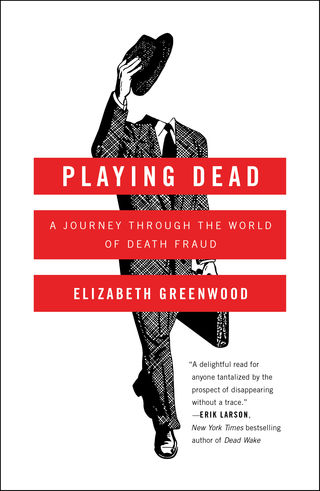Pseudocide: The Art of Faking Your Death
Pseudocide: The Art of Faking Your Death
Writer explores the shady world of people who commit “death fraud.”

Source: Simon & Schuster
Dr. Bill Bass, the renowned forensic anthropologist who founded the Forensic Anthropology Center, a.k.a., the Body Farm, was hired for the job. Bass and his colleagues had made painstaking efforts to learn what happens to flesh and bone during a fire. He was the man for the job.
I’ve seen Bass present this case: Amid charred debris on the floor of the crushed car, he discovered the top of a skull. He thought its position there was odd, even for a crash. In addition, the fire seemed inexplicably hot for a car fire. It looked to him like insurance fraud —and the giveaway was the teeth.
Even before Bass obtained Rutherford’s dental records, he saw that these teeth were inconsistent with what would be expected of an affluent, 34-year-old Caucasian male—but were consistent with an older native of Mexico.
The insurance company hired a private investigator, who found Rutherford alive and well. He’d stolen a corpse from a Mexican mausoleum, placed it in the car, crashed the car, torched it, and walked away to collect on the life insurance policy. Instead, he went to prison.
Many stories like this one about “pseudocide” can be found in Elizabeth Greenwood’s book, Playing Dead: A Journey Through the World of Death Fraud. It’s amazing what people will do to try to erase all trace of themselves so that they can live a different life. She starts the book with her own desire to acquire a fake death certificate. It’s not all it’s cracked up to be.
As part of this journey, Greenwood, a creative writing instructor, interviews experts on the art of vanishing, such as the elusive privacy consultant Frank Ahearn, who wrote How to Disappear (and does not advocate pseudocide). To her surprise, there is a “vibrant ecosystem” of people who trade tips, assist with buffers, and know about necessary documents and black market morgues. But countering them are professional finders.
“Faking death,” Greenwood writes, “could be a refusal, a way to reject the dreary facts, a way to bridge the chasm between who you are and who you want to be. From bit player in your life, you become the auteur. From being pressed up against a wall, you carve a tunnel.” Apparently, many people thought so during the 9/11 World Trade Center crisis, as missing persons reports far outpaced the body count (although most were attempts to collect on a fake relative, not exploit a sudden opportunity to vanish themselves).
Some people fake their death to avoid jail or get away with a crime; others want to escape debt, a stalker, or a burdensome relationship. (Males tend to be bolder and more creative than females.) Just this week, for example, Ted Whitehead turned himself in for faking his own death last year to escape charges of sexual abuse of a minor. In June 2016, he’d left a suicide note, suggesting he'd jumped off a bridge. Officials found a pile of his clothes nearby but no body. (That’s an amateur’s mistake.) When someone sent Whitehead’s computer to the police, his scheme unraveled.
“If you want to disappear and do it right,” Greenwood writes,
“the planning is not for the faint of heart, or the careless.” She proves this throughout her book. The question for those who want to reinvent themselves is whether they can ever completely leave their lives behind. Many think they can do it for a period of time, but expect to pick it back up at some point. To really be successful at pseudocide, though, it seems one must be able to walk away—and stay away—from everything. This includes family, medical records, bank accounts, social media, cars, and your reputation as an honest person. (One man actually faked his death and still managed to live at home, but this is rare.)
In fiction, you have Juliet, Huck Finn, Dick Whitman, and Gillian Flynn, and in myth, Jim Morrison, Jesse James, Michael Jackson, and Elvis. Greenwood does talk to "true believers" who are convinced that some of these celebrities succeeded in fakery. More amusing, though, are those who pose as the supposedly dead celebs.
In another, poignant chapter, Greenwood describes the victims of pseudocide—children damaged in the wake of a fraudulent "death." First, there’s the shock of loss. Then, if the plot is eventually uncloaked, there’s the insult of being duped and deceived (not to mention abandoned). Or, if they’ve been part of the scheme, they must live a lie and perhaps endure prison as accomplices.
Although a fair chunk of this book is devoted to one man’s story, and readers looking for more creative people might get restless, this bold narrative unveils a fascinating area of life on the dark side. Greenwood’s strange scavenger hunt into the death fraud subculture has a certain appeal, and she's off to a great start as a narrative journalist who can tap into the lives and minds of intriguing characters.

